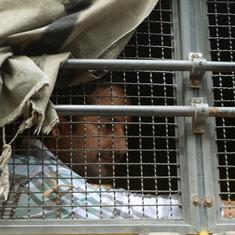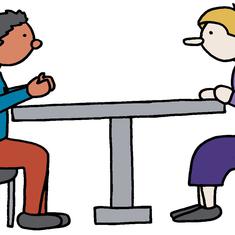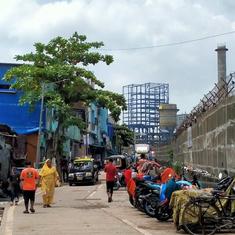A large room in an abandoned government building has been home to Babita (not her real name), 32, her husband and three children for about three years. It is strewn with tattered furniture and personal belongings, clothes drying on the window grill and a few pictures stuck to the wall.
Here in Jorethang, a border town 70 km south-west from the state capital, Gangtok, Babita, a Nepali migrant who grew up with her father and step-mother in a Darjeeling tea estate, was 16 when, during a trip home to meet her mother, a stalker raped her.
“I was so little, what did I know about the law,” said Babita, a slender, feisty woman who dropped out after grade X. “I couldn’t take it anymore and asked the guy to marry me.”
Babita’s husband, a drug user and peddler, has physically abused her almost every day since then.
In 2006, she began abusing pharmaceutical drugs. “Life has been hard. When I can’t hurt others, I hurt myself,” Babita said, showing me the cuts on her left wrist. She tried committing suicide several times by hanging herself, overdosing on drugs, and even brutally hurting herself with a knife once.
“God kept me alive,” she said.
Not everyone is lucky enough to survive. Bishal Sherpa, a former drug user and outreach worker at the Hope Foundation, a Jorethang-based NGO, shared the story of his younger brother, Vicky, also a drug user, who hung himself in 2015.
The dark, hidden side of India’s golden state
Drugs. Suicide. Attempts at suicide.
These are not stories India associates with the northeastern, landlocked former monarchy of Sikkim, often termed the golden state for its run of progress after its integration into India in 1975. With just over 600,000 people, Sikkim is India’s least populated state and the smallest after Goa.
Sikkim is India’s third-richest state (after Delhi and Chandigarh), by per capita income. Its literacy rate is India’s seventh highest. In 2008, it was declared India’s first open defecation-free state. In 2016, it became the country’s first and only organic state, and it topped a 2016 nationwide survey on states with the best working conditions for women.
These achievements hide stories like those of Babita and Vicky. Behind the state’s prosperity and cleanliness, we found a state awash in drugs and suicides.
Despite all-round progress, Sikkim’s suicide rate was 37.5 per 100,000 people in 2015. That’s not just more than triple the Indian average of 10.6 but way above the global average of 11.4. Sikkim’s unemployment rate is also India’s second highest (after Tripura), more than three times the national average of 5%, and the state reports widespread drug abuse.
There are 1,026 injecting users registered by the National AIDS Control Organisation, but most drug users in Sikkim abuse drugs orally, and with a government that treats drug-addiction purely as a law-and-order problem, violating its own rehabilitation laws in the process, there is, currently, no stemming the tide.
A social worker in Gangtok (who spoke on condition of anonymity because of his association with a government project) acknowledged the lack of data. By his reckoning, and that of other social workers, at least seven of 10 teenagers in Sikkim abuse pharmaceutical drugs.
Are drug use and unemployment related? They appear to be.
27% of Sikkimese who committed suicide were unemployed
A fifth of the world’s suicides were related to unemployment, and suicides increased nine-fold after the global economic crisis in 2008, according to this 2015 study. The link between unemployment and suicides in Sikkim appears strong.
More than 27% of those who committed suicide in Sikkim in 2014 (67 of 244 suicides) were unemployed, according to 2014 National Crime Records Bureau data.
Punjab and Manipur, states with rising literacy without jobs, have a high rate of drug abuse, as IndiaSpend has previously reported. Sikkim is now one of three states struggling with drugs caused by unmet aspirations.
Suicide was the leading cause of death in India, occurring most frequently among educated young adults in the country’s most rapidly developing states, such as Kerala and Tamil Nadu, according to this 2012 study, which used data from a 2010 cause-of-death survey.
“The most obvious explanation is that the distance you fall when you hit the ground of reality is greater when your aspirations have been built up by opportunities that in reality don’t exist,” one of the researchers said in this interview to The Globe and Mail, a Canadian newspaper.
The findings of this study offer insight into the crisis in Sikkim, where between 2006 and 2015, suicide was found to be most common in the 21-30 age group. The high expectations and vulnerabilities of those born after the state’s merger with India in 1975 have resulted in them turning to drugs and suicide, said Kunal Kishore, a United Nations Office on Drugs and Crime (UNODC) official.
“Sikkim opened up very recently to the outside world, but it has focused on speedy economic development at the cost of its people,” he said. “The state has neglected social aspects in the process.”
‘When I was growing up, I thought my life would be beautiful’
Prashant Sharma once hoped to become a pilot.
The son of a former army officer, in the 1990s he was studying in a good government school in a small town in East Sikkim district.
“When I was growing up, I thought my life would be beautiful,” said Sharma, 33, an executive member of the Indian Drug Users Forum and coordinator for the Hepatitis Coalition of Sikkim (HepCos).
He was first introduced to pharmaceutical pills in the eighth standard. Most students received little attention and abusing drugs was common. The habit was fuelled further when his parents separated. When Sharma went to rehab and tried to give up drugs, he found no support from the society or government programmes and no job opportunities.
“I was seeing all these social and cultural changes in the state. There was widespread development,” said Sharma. “People now have more expectations, but these have not been met, so you begin to look for an escape.”
While there are similarities between Sikkim and other states with high suicide rates and drug abuse, said Nancy Palmu Chankapa, a clinical psychologist in Gangtok, stressing it wasn’t possible, yet, to pin a single reason for the state’s high suicide rate. Several cases that she has dealt with have been related to family problems, alcohol abuse, mental illness, and extra-marital affairs.
My investigations–focussed on the link between drug abuse and suicide–across South and East Sikkim districts show that suicide and drug abuse were indeed linked. Several young addicts spoke of the pressure of unmet expectations.
Sikkim: India’s Highest Suicide And Unemployment RatesIndicatorSikkimNational AveragePositionSuicide Rate (Suicides per 100,000 population, 2015)37.510.61stUnemployment Rate (Population aged 15 years and older available for work but did not get it, 2015-16)18.1%5%2ndShift in HIV prevalence (Adult population that is HIV positive) from 2007 to 2015+130%-24%29th (highest increase)

I spoke to about 15 former and current drug users in Sikkim, all of whom began abusing pharmaceutical pills as teenagers, and were suicidal at some point in their lives. Pharmaceuticals are the key to Sikkim’s drug problem.
Why abuse of pharma drugs is common in Sikkim
A few meters from Babita’s home in Jorethang runs the river Rangeet. Police officers stand guard here because across the river and past a dense forest lies West Bengal. Jorethang residents can cross over by foot or by boat to buy cheap, easily available pharmaceutical drugs.
Most Sikkimese drug users choose cheap pharmaceuticals instead of deadlier options, such as heroin. India is the third largest producer of pharmaceuticals in the world and some of this is diverted for drug abuse.

There are little data on the subject, but according to this 2011 UNODC study, many drug users in the country have shifted from narcotics to pharmaceutical abuse.
The medicines prone to abuse include codeine-based cough syrups, spasmo-proxyvon (SP), a pain killer that India banned in 2013 for containing an opioid, and Nitrosun (N10), a hypnotic drug used to treat insomnia, anxiety and epilepsy. These drugs, although unavailable over the counter in Sikkim, can be easily bought across the state, into which they filter from West Bengal. Siliguri, about 116 km south of Gangtok, remains the main transit point.
While Sikkim has a history of alcohol abuse and the use of cannabis, drug abuse in Sikkim has only increased substantially over the last five years since large pharmaceutical companies moved base to the state to take advantage of a 10-year tax exemption, said Kishore. There are now about 15 such companies in the state. This has led to increased diversion of legal pharmaceuticals to the illicit market.
But Sikkim’s larger problem is that the government almost entirely ignores the state’s drug problem.
Why drug abuse often leads to suicide in Sikkim
Health worker Sherpa cannot forget the last time he saw his brother Vicky at the Namchi district hospital. Vicky was on oxygen but still gasping for breath.
“The doctor barely checked him, did not even change his oxygen cylinder. He would have lived if they had treated him right,” Sherpa said, his voice shaking. A case of suicide was registered with the police, but Sherpa has yet to get a post-mortem report or death certificate, despite repeated requests.

Sikkim’s otherwise progressive outlook on social and civic reforms does not extend to dealing with drug abuse. It treats the problem purely as a law-and-order issue.
In India, between 2004 and 2014, suicides connected to drug abuse exceeded those related to dowry, poverty and financial issues, according to this 2014 Hindustan Times report. At least 25,426 people committed suicide due to drug- and addiction-related problems over this period.
The Narcotic Drugs and Psychotropic Substances (NDPS) Act, 1985, criminalises drug use, but a 2014 amendment provides for pharmacological options for treatment of drug dependence. A distinction is now also made between users, peddlers and smugglers; sentencing depends on the type and quantity of drug seized.
The NDPS Act allows for states to have their own drug policy. In 2016, Nagaland released its own drug policy, which emphasised education and awareness. Punjab has a separate fund for detoxification and rehabilitation, but the state’s war on drugs is more a war on addicts, this 2016 Indian Express investigation revealed.
Sikkim was amongst the first states to draft a drug policy but its act, the Sikkim Anti-Drugs Act (SADA), 2006, makes no distinction between drug users and peddlers. It criminalises drug use, imprisons addicts for small crimes and offers little help in rehabilitation or recovery. The state’s public health system too is indifferent to the health issues faced by drug users.
Under SADA, a drug user can be fined upto Rs 10,000 and be disqualified from applying for government jobs. A state government employee booked under the Act is liable to be imprisoned for up to six months, dismissed and pay a higher fine, up to Rs 20,000. The Act empowers designated officers to enter, search, seize and arrest without any warrant or authorisation.
“Drug users cannot really be imprisoned, but usually they double up as small-time peddlers to make some money. So, when someone is found with substance, police officers add other sections and put them in jail,” said Khilburna Gurung, senior superintendent of police at the Central Jail in Gangtok. “Unless the law is amended, this will keep happening.”
On its Facebook page, the Sikkim Police, which launched a “special drive against drugs” in March 2016, regularly posts photos of those caught with pharmaceuticals booked under SADA.
Despite law, Sikkim says it does not fund care of drug users
“As per the UN international drug conventions on drug control, of which India is a signatory, SADA is harsh, and does not support the health and human rights of drug users who need treatment,” said Kishore, the UNODC official. “Drug users as well as smugglers and mafia are being tried under the same sections of the law here, which is similar to what is happening in Philippines.”
There are no government funds for the education, treatment, aftercare, rehabilitation and social reintegration of addicts, the state’s department of healthcare said in a right-to-information reply to a query filed by HepCos. Under SADA, these programmes are supposed to be running.
The state’s attitude has pushed drug abusers further into the shadows. “By criminalising users, Sikkim has failed to handle the issue with sensitivity. As a result, there is no awareness and drug users are discriminated which often pushes them onto the streets, to sex work, and suicide,” said Kishore.
Long imprisonment affects chances of rehab
Rajesh (not his real name), 31, was arrested in 2013 after being caught at the border check-post with strips of SP in 2013. He was not allowed to talk when presented in the court the next day and spent a year in Namchi jail awaiting trial. A year later, he was sentenced to two and a half years in prison, and was moved to Gangtok.
Having lost his parents as a child, Rajesh, a driver, lived with his brother’s family. He has not seen them in three years.
“In the long time that I’ve been here, I’ve seen so many people who were arrested under SADA get bailed,” he said in an interview at the central jail. “But I am poor and unfortunate.”
Gurung, the police officer, admitted that those who were rich and well connected often got bail within a few days for being arrested for drug offences, while those who were poor and partly educated stayed in jail, even if innocent. On average, Gurung said, the central jail usually has 25 to 35 inmates held under SADA.
After a meeting organised by the Sikkim State Legal Service Authority (SLSA) in 2016, officials and civil society members decided that inmates should receive medical counselling while in jail. More than 30 sessions have been conducted since September 2016, said Gurung, but these sessions have not been of significant benefit, according to feedback he received.
Rajesh, who has attended all the sessions, said he would rather have received counselling prior to being convicted or after being released. “How will society accept me now?” he said. “I am a criminal to them.”
Prakash (name changed), 24, was sent to Jagriti Integrated Rehabilitation Centre for Addicts (JIRCA) in Gangtok for a four-month recovery treatment after being arrested under SADA. His brother-in-law, a police officer, ensured he wasn’t sent to prison, said Prakash.
“About 10 of my friends got worse after they served prison sentences, four of them tried to kill themselves,” said Prakash, a college dropout who once helped his family run a dairy shop. “I have tried committing suicide in the past. If they had put me in jail, I wouldn’t have given up drugs, but staying here has helped me.”
Help centres are out of medicines, bandages
In addition to JIRCA, there are about seven other rehabilitation centres in Sikkim. Robin Rai, who works as a counsellor in one of the rehabs, is also a staff at the 24×7 Crisis Centre, a suicide prevention helpline run by the NGO Drishya Foundation and funded by the state government. The centre is run out of the psychiatric ward of the government-run Sir Thudop Namgyal Memorial (STNM) Hospital in Gangtok.
Started in April 2015, the helpline has received more than 120 calls so far, but Rai admitted that receiving calls from drug users is rare. Callers usually have marital or relationship problems, are dealing with a chronic illness, or are troubled by unemployment.
Rai, 39, took to pharmaceutical drugs as a teenager and then struggled for over 15 years to give up the habit, a struggle that pushed him to failed suicide attempts. “In most instances here, drug overdose deaths are not accidental but suicide cases,” said Rai. “But there is so much stigma around them that these cases go unreported.”

A large number of drug users that Rai has counselled in the rehab have been suicidal, and yet the only times when drug users were brought into the crisis centre in STNM hospital–four times as Rai recalled–were as emergency cases, after they were found by their families.
In a section of Majigaon, a locality in Jorethang, known as ward no 3 and 4, and clustered with one-room shanties that house around 2,500, I saw empty strips of pharmaceuticals littered across the area. A 15-year-old boy, who admitted to regularly consuming marijuana, told me that almost every resident there abused drugs.
A drug peddler told me her son killed himself when in his 20s.
Although the area has a high concentration of vulnerable drug users, when I visited, there was no naloxone available to treat overdoses and no bandages or medicines for abscesses, bacterial skin infections that form when drug addicts use infected needles or inject insoluble components.
Women users face particular discrimination
“When I can’t sleep, I write,” Babita said, pulling out a diary and flipping the pages to show me poems written in Nepali.
Babita is literate and vocal, an active supporter of the Sikkim Krantikari Morcha, a local political party. She has big dreams for her children. As for herself, she counts herself lucky for not being pushed to sex work for money.
About 9.8% women in Sikkim (of 150 participants) were injecting drug users, according to this 2015 UNODC study. It includes the case study of a 32-year-old drug user who was made to forcibly have sexual intercourse with strangers for money by her husband. Fear of discrimination and stigma kept her from seeking help from the police. She was depressed and suicidal, and said there were many others like her.
Most female drug users are either divorced or in unhappy marriages, said Rinzing Bhutia, a research-team member of the UNODC study.
“When I went to rehab in 2005, after six years of abusing prescription drugs, there were four other girls my age. But today, I am the only one who’s fine,” said Bhutia. “Two of them went missing and their families never even inquired. One was most likely trafficked, and another lost her sanity after she was sexually harassed and shamed. I had a good counsellor who kept in touch with me regularly and made sure I didn’t give up. I got lucky.”
Three rehabilitation centres in Sikkim accept women, Bhutia said, but many women who get dropped off at the centres by husbands or families are never taken back by them and fall back to drugs.
“The government wants Sikkim to be known as a pollution-free, disease-free state. But I work with young men and women every day, and they are constantly struggling,” Bhutia said. “Sikkim will lose its people if it doesn’t act now.”
Some names have been changed to protect the identity of sources.
This article first appeared on Indiaspend, a data-driven and public-interest journalism non-profit.










